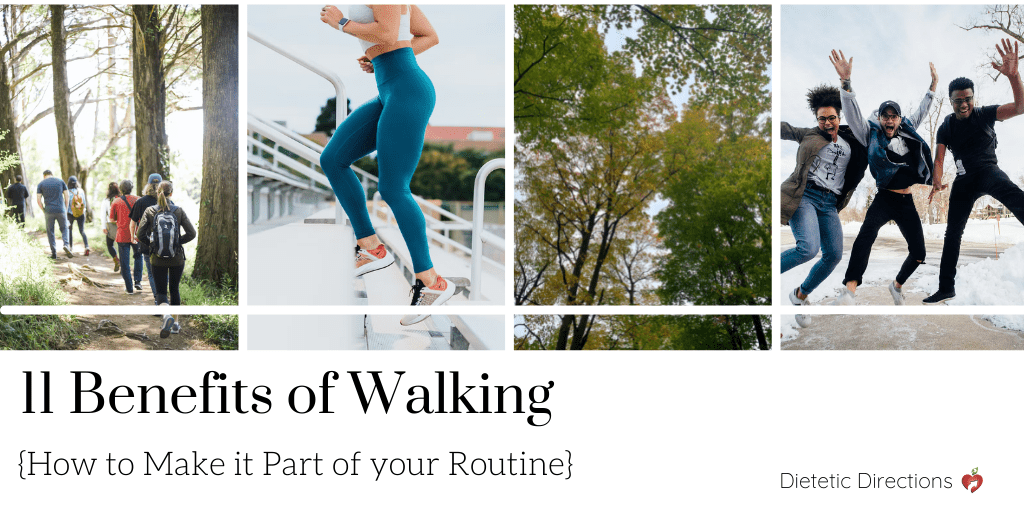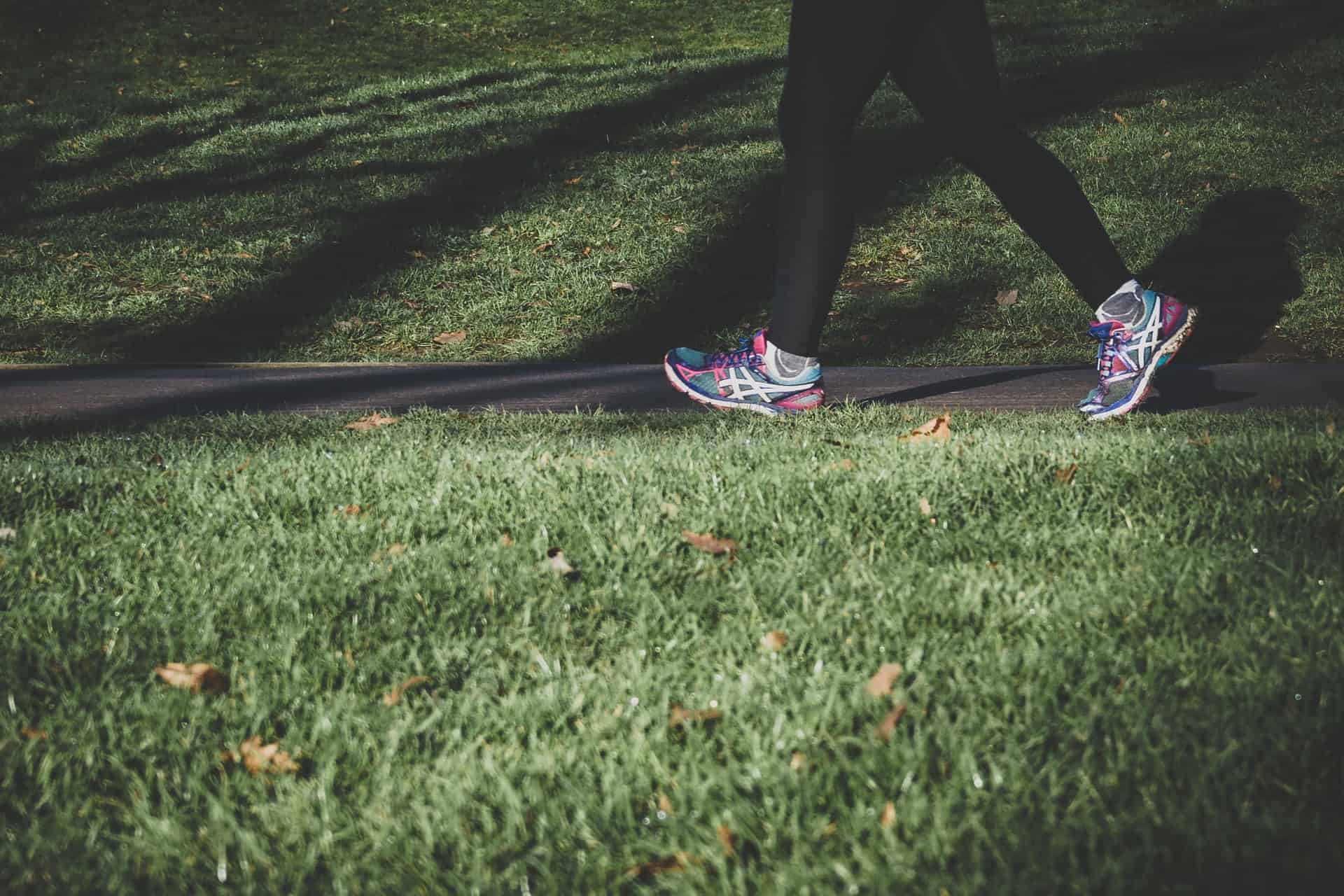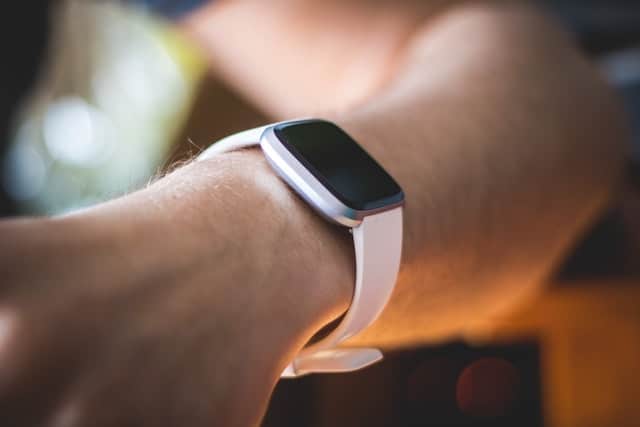
11 Benefits of Walking
The benefits of walking are endless, but today I’ll highlight some of the biggest contributors to better health. Interestingly, during the height of the pandemic, more people started walking. Truly, it was the ideal pandemic activity – being outdoors, socially distanced, but still allowing for social interaction with a walking buddy. If you are interested in learning how walking can promote better health, then you are in the right place.

Discover some of the many benefits of walking! Read on.
Today’s blog will explore some of the many benefits of walking. After all, we all know there are mental and physical health benefits to being in nature and moving the body. In fact, spending time in nature not only lowers our stress hormones but also boosts memory, creativity and work satisfaction, according to a University of Toronto program. Without a doubt, moving your body and walking outdoors may arguably be one of the best things you can do to improve your health.
11 Benefits of Walking
Walking benefits our health by increasing our circulation, getting our hearts pumping, boosting our happy hormones, and consequently lowering our stress.

Victoria Park in Kitchener. Perfect place to stroll!
In case you didn’t know, here are 11 benefits of walking:
- Decreases risk of heart disease and stroke.
- Reduces high blood pressure and risk of certain cancers (breast and colon).
- Helps control diabetes and blood sugars.
- Improves mood, cognition, memory and sleep.
- Fights fatigue and boosts energy.
- Supports weight management and decreases body fat.
- Alleviates depression and anxiety.
- Improves cardiovascular fitness.
- Strengthens bones and muscles.
- Improves immune system.
- Reduces stress and tension.

Look up local hike spots to change up your scenery!
How to Prioritize Walking
Firstly, to help prioritize walking, you have to identify your motivation or your why. This helps you commit to the change and makes your new habit easier to maintain. After all, you continue to do habits for a reason. So what’s your reason? Knowing why you’re taking time out of your busy day to walk will help you commit to the change.
Action: If you want to start a walking routine, ask yourself why? Be specific in your answer.

When you start walking, identify your “why.” This will help you commit to the habit over time.
If you are new to walking, you could start by exploring what you want for yourself. Do you want to feel more energetic? Would you like a stress-relief break as you plow through hours of work? Do you need to better control your blood sugars or lower your blood pressure? Consequently, knowing your why will help you prioritize a healthy routine of walking. You will also have to decide why walking is your preferred activity. If you really don’t like walking or find it too boring (which it’s not!), then you will have a hard time keeping it up and prioritizing it when you get busy or the weather isn’t ideal.
2. Have a Walking Routine:
Decide when in your schedule that walking would be feasible. Perhaps you could fit it into your morning routine before getting in the car to drive to work or walking to drop off (or pick up) your kids at school. Maybe you could walk with a colleague at the end of your lunch break. Perhaps it would be enjoyable to go for a quick stroll after dinner while the sun sets. Remember, even 10 to 15 minutes of walking leads to health benefits. Nevertheless, carving out times in your schedule and even physically putting a recurring event in your schedule can help dedicate time to reap these walking benefits.
Making time for any new habit can be tough. Make walking a part of your daily routine and you’ll be more likely to stick with it!
Healthy Habit TIP: Try ‘piggy-backing’ walking onto an existing habit to help it stick. For example, after intensive working at home in the morning, a client adds a brisk outdoor walk as her break. Therefore, she is pairing her habit of working in the morning with a walk afterwards. She told me this habit has stuck because it serves as a “reward” to get outside, stretch her legs, enjoy the serotonin boost of being around trees, which helps her maximize afternoon efficiency.
3. Try a Walking Buddy:
Without a doubt, the pandemic made it difficult to socialize at times. This meant that we had to get creative with phone calls and many started adding phone calls to their walks or “walk and talks.” This is now part of many people’s routines. For example, try chatting with a friend or having a “walking meeting” where you are discussing business plans while being outside. Connecting while walking can help us reap all the health benefits!

Having a walking buddy can provide us with extra company and motivation.
Our Dietetic Directions team enjoys group walking meetings, where we discuss learnings, ask questions and support one another while exploring our neighbourhoods. Consequently, the extra motivation to walk with others helps us experience the benefits, which in turn helps perpetuate the habit.
4. Add Extra Fun!
Pairing a little fun into a walking routine helps this habit stick as well. When strolling, try listening to a podcast, your favourite music or simply the birds. Enjoying ourselves helps our brains link walking as an activity with positive benefits. This helps us begin to CRAVE walking because we want to get the ‘high’ of the associated mental or physical benefits we notice.

Making time for any new habit can be tough. Make walking a fun part of your daily routine and you’ll be more likely to stick with it!
Did you Know? According to the American Council on Exercise, people who track their steps take an average of 2,500 more steps per day than those who don’t.
5. Build Slowly
For sustainability, if you are beginning a walking routine, start with something that is easily achievable for you. If this means adding 5 to 10 minutes of brisk walking to your daily routine, then go with that! Plus, you can always build onto it. The key is in the sustainability and the act of prioritizing your walking routine for long-term success. Additionally, you can add extra steps in such ways as parking farther away from your destination, opting for no cart when golfing or taking the stairs instead of the elevator. It all adds up to extra movement.
Like going up a ladder, to maximize your chances of success, start with a routine that’s sustainable before building.
Additionally, pedometers like FitBit watches or step-counting apps on your phone can be useful tools for seeing where you’re at. However, setting a step goal of 10,000 steps is ambitious for the average person who walks 3,000 to 4,000 steps a day. See where you are starting from and set a goal to increase this slowly so the odds of it sticking are higher.
Tracking your steps can help you hit daily physical activity goals and reach your targets easier!
My Benefits of Walking Story:
I’ve always enjoyed physical activity, but admittedly, walking was never part of my regular routine. However, during the height of the pandemic, when gyms were closed and social distancing was recommended, I started going out for a daily walk. It felt great! My breathing was deeper and more relaxed. I felt calmer and happier after walking. Before long I was hooked – my brain craved all those benefits. Noticing the internal benefits made it easier to prioritize dedicating time to walk – morning, lunch or evening. I could NOT go back. Now, rain or shine, I am out there for a daily walk.

Andrea out on a daily walk this winter!
Bottom Line:
Walking is a routine that requires minimal equipment and is flexible for the amount of time you’re able to dedicate. The more consistent you can be, the greater the walking health benefits will be. By enjoying getting outside, you can reap the numerous mental and physical health benefits such as lower blood pressure and decreased risk for heart disease and certain types of cancer. Walking also strengthens bones and muscles and cardiovascular fitness. What can walking do for you?
The internal benefits of walking (such as feeling more relaxed and calm) don’t take long to show up.
What walking benefits do you notice? What routine helps you be consistent with incorporating physical activity into your busy schedule?







